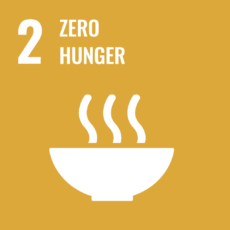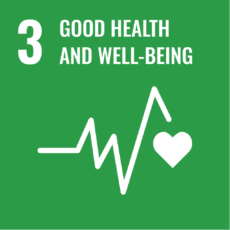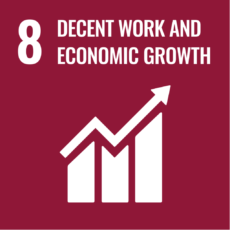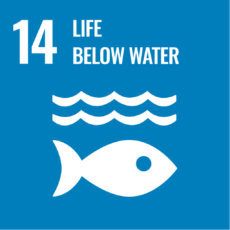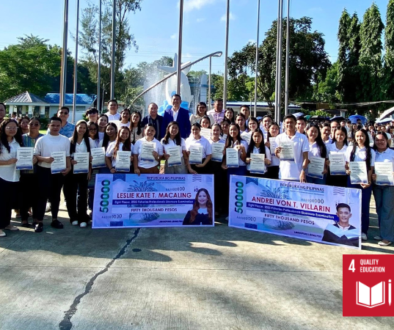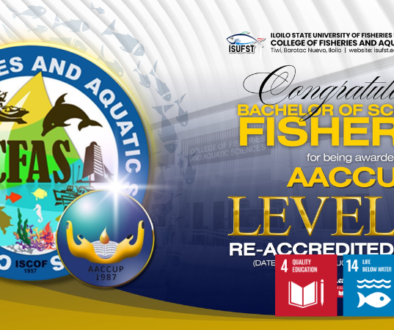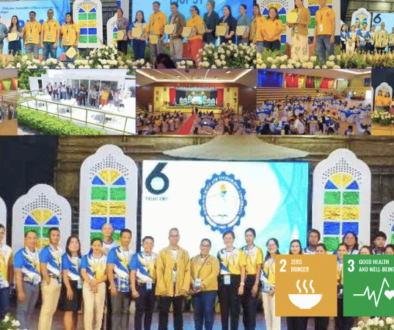
On stormy days in Iloilo, when the sea looks restless and the shoreline brims with stories, four ISUFST students chose to chase answers hidden in the smallest of places—inside the gut of an oyster. For 20-year-olds Melody Vaughn Ferrer, Johnas Arellado, Romeo Theodore Golez, and Arlene May Linacero, what began as curiosity soon grew into the kind of work that could change lives, especially for the fisherfolk who depend on tilapia farming for survival. Together, with the quiet but steady mentorship of Prof. Jason Albances, they became a research team unlike any other.
Just days ago, they made history. Named Top 10 National Finalists in the BPI-DOST Innovation Awards, the young researchers secured ₱60,000 with the chance to turn it into ₱150,000 if they rise into the Top 3. For ISUFST, it is the first taste of national acclaim at this level and nature. For the students, it is fuel and validation rolled into one—evidence that an oyster-born idea from Iloilo can swim, and thrive, in national waters.

The Team Behind the Breakthrough
Their story is a grounded picture of ISDA in motion—research done with integrity, for social justice, through disciplined work, toward academic excellence.
Melody, a BFAR scholar from Guimaras, traced her passion to growing up close to the sea. “At first, I just wanted to help in research,” she said. “But along the way, I realized how much it fueled my drive to persevere and deepen my passion for discovery.” Her journey from high school science fairs to oyster-based probiotics reveals not just persistence but a love for science that mirrors the mission of Iloilo State University of Fisheries Science and Technology (ISUFST), the only fisheries university in the country, to raise globally competitive graduates who lead with responsibility.
Johnas, a third-year student from Anilao, Iloilo, admitted he wasn’t ready for research at first. But when he learned microbes from oysters might help fight fish disease, he was hooked. “The idea that something small could save you from creating this large change also delighted me,” he recalled with a soft smile. Outside the lab, he unwinds with music and his food and consumptive fish—proof his curiosity swims past textbooks into daily life.
For Romeo, the project was almost a calling. “The chance to study probiotics from oysters was something I never thought possible,” he said. Manga and anime may give him comfort after long days, but in the lab he became one of the group’s anchors. He repeated technical procedures tirelessly until they worked, his honesty about failures matched by his joy in every small success. That mix of grit and humility made him both steady worker and natural communicator—traits that soon earned him the role of the team’s buyer, marketer, and outside link.
Arlene, a BFAR and LGU coop scholar from Cabatuan, Iloilo, was drawn in by her love for freediving and swimming. “Being underwater connects me to the world we study,” she reflected. As the team’s organizer, she kept those late nights from going off the rails. “What I love is our balance—if one of us misses something, someone else calls it out.” It was she who first proposed probiotics as their research direction, setting the course for everything that followed.
What set this group apart was how their roles naturally complemented each other. Melody took on the less glamorous tasks—documentation, filing letters, cleaning up after experiments. “It’s the dirty work that keeps everything moving,” she joked. Johnas, the problem-solver, handled daily water changes and jury-rigged solutions when lab resources ran low. Romeo became the communicator, doing market surveys and purchases while still grinding through lab work. Arlene managed the group’s schedules and communication, never letting momentum stall. Each role was different, but together they made the research possible.

Setbacks, Support, and Small Wins
The sacrifices they poured into the study weren’t just late nights—they were entire seasons of their young lives. Melody remembers entering the lab at five in the morning and leaving near midnight, sometimes skipping meals just to record tilapia behavior. Johnas recalled the never-ending challenge of securing clean water, especially during weekends or holidays when supply was unreliable. Romeo spoke of equipment that wasn’t fit for their needs, forcing them to adapt. Arlene admitted she often pushed for extra experiments even when energy was low.
Their adviser, Prof. Albances, put it plainly: “I watched them trade sleep, meals, and weekends for this work. We lost three runs to contamination, ran out of clean water, made do with tools that weren’t built for us. Each time, they didn’t sulk—they changed the method and came back. That’s science: care and perseverance for a higher cause.”
For them, science wasn’t neat—it was chaotic, sleepless, and stubborn. “The worst part? Those marathon lab days—no lunch, no breaks,” Melody shared. “The best? That moment the data finally clicked and every hour felt worth it.” Romeo added, recalling when the oyster probiotics first checked the pathogen: “That tiny win kept us going.”
Even steady Arlene confessed to jitters. “I’m kinda confident, just trying not to jinx it.” She carried on, letting the results speak for themselves “The whole process really matters—it proves ISUFST can hold its own in fisheries research.”
Their adviser watched the grind and the glow-ups. “Seeing them after a failed experiment was the hardest,” Albances admitted. He’d ease the room with snacks some days, push harder on others—“kung gis-a, ga latigo ‘ko sa ila (sometimes, I have to ‘crack the whip,’)” he joked. No spoon-feeding, just guided grit. “Their edge is resilience. They kept finding ways to improve.”
It helped that ISUFST itself stood behind them. With the school’s biolab facilities, the students learned to maximize every resource, embodying the university’s guiding principle of empowerment. “Even if the facilities aren’t always perfect, the environment pushes us to innovate,” Arlene said. For Johnas, the experience confirmed his foundation: “ISUFST gave me not just aquaculture knowledge but the chance to do real research early.”
What made their achievement even sweeter was its history. For the first time ever, a group of ISUFST students broke into the top 10 of this national innovation competition. “They are making history for the college,” Albances proudly said. For him, their recognition proved that even as third years—who began this project as sophomores—they could stand shoulder to shoulder with students from more resource-rich universities.
Behind every trial was also a circle of support. Melody, a first-generation student, said her family’s faith gave her courage. Johnas admitted his strict but supportive parents, and especially his sister, pushed him to persevere. Romeo, coming from a family of teachers and seafarers, was grateful for a household that valued discipline and service. Arlene said simply, “My parents supported me all the way.” Beyond families, the school provided labs, vehicles, and even small comforts when needed. “All we asked for, the school supported,” Albances stressed.

Oyster Probiotics for Tilapia: Impact on Fisherfolk
The team’s study, anchored on samples from Brgy. Palaciawan in Barotac Nuevo, directly answered farmers’ questions: “How do we stop the disease?” Aeromonas shrugs off antibiotics, putting small tilapia farmers at risk. By using bay-ad (oysters) as a low-cost probiotic, the students proved science can come from local waters—not pricey imports. If scaled up, this could lower costs, protect fish stocks, and give stability to families whose survival hinges on aquaculture.
Their project drew funding from DOST–PCAARRD with Dr. Mary May Payne as special project head—and from ISUFST. They finished the study with a cost kept relatively manageable, thanks to school equipment and shared resources. The research, part of their undergraduate thesis, has already set the stage for further work. In December 2025, ISUFST professor Dr. Payne will accompany the team to present their full paper internationally, by which time Albances will already be in Japan at Tokyo University of Marine Science and Technology for his PhD studies. “The results are in place for presentation,” he confirmed, hinting at an even bigger stage ahead.
NFRDI and PCAARRD stand for National Fisheries Research and Development Institute and Philippine Council for Agriculture, Aquatic and Natural Resources Research and Development, respectively. While BPI, BFAR, and DOST mean Bank of the Philippine Islands, Bureau of Fisheries and Aquatic Resources, and Department of Science and Technology.

Why This Matters to Families
What makes their work remarkable is how it stretches beyond the lab. “It’s not just about fish,” Melody said. “It’s about the people who depend on them.” By finding a natural, oyster-based alternative to antibiotics, the team points to safer tilapia on the table, steadier incomes for fisherfolk, and healthier seas—right in step with SDGs 2 (Zero Hunger), 3 (Good Health and Well-Being), and 14 (Life Below Water).
Romeo put it more plainly: “Our project can help a lot of small fish farmers by producing a natural way to reduce disease and boost fish health.” Johnas added, “This doesn’t just help aquaculture—it helps fisherfolk families whose livelihoods depend on it.” Arlene saw it as both livelihood and environmental protection: “It’s about supporting local communities through science.”
Looking ahead, each student carries not just dreams but lessons etched by the journey. Melody, an athlete before she was a researcher, learned that sacrifice is the price of discovery. Johnas discovered that asking for help is not weakness but strength. Romeo reflected that diligence and balance are vital: “Ask questions. The world promises more if you’re just keen to look for answers that solve problems for the marginalized.” Arlene distilled it into discipline: “Always manage your time, list the work, distribute it well—but never forget to rest.”
For Prof. Albances, the lesson was simple but profound: interest and grit can push students far beyond the curriculum. “They are only fresh third-years now, but they’ve learned so much more than what’s inside the classroom,” he said. He continues to give free Friday lectures to second-years, inviting them into the same journey. What began as a deal to help senior students in the lab grew into a culture of curiosity that, in his words, “can change futures.”
At its heart, this story is more than science—it’s possibility realized. When curiosity is tended, when resilience finds its moment, and when young scientists are trusted, change begins. The future of discovery lives not just in experiments but in the hands of dreamers, the tables of fisherfolk, and the steady guidance of teachers who let them soar.
“As a university, this directly advances the SDGs and affirms ISUFST’s leadership in marine science,” said Dr. Nordy Siason. “Four students and a mentor are walking away with more than data—they carry grit, service, and hope.”
He put it with a fisher’s plain wisdom and an ISUFST nod: “ISDA isn’t just fish—it’s our promise of shared progress. Care for the fish, feed families, strengthen communities. From an oyster’s gut to the nation’s tables—that’s how science should feed the future.” (Herman Lagon/PAMMCO)


